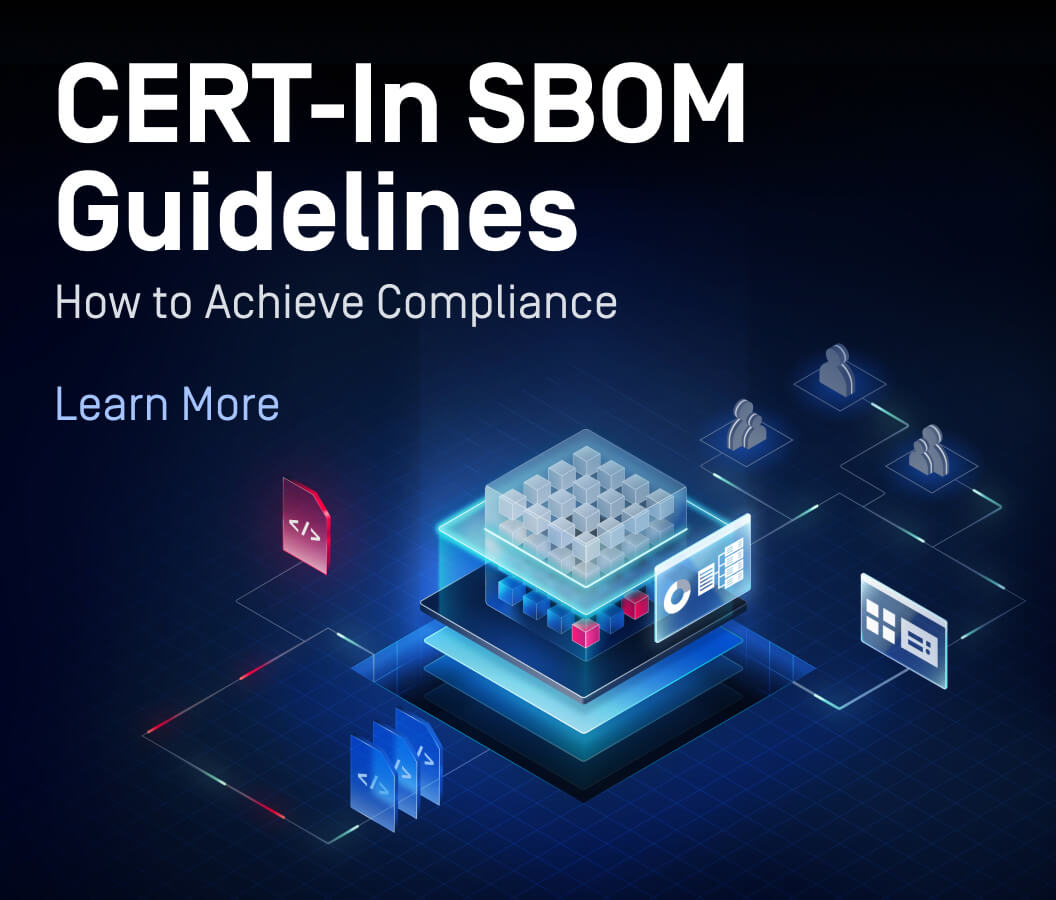Software development relies heavily on leveraging prebuilt, third-party components to streamline processes, some of which are open source. These components are the building blocks of modern web applications but can also introduce vulnerabilities, offering cybercriminals potential entry points into your system.
To gain visibility into the components and manage dependency vulnerabilities comprising your software, maintaining a list called an SBOM (software bill of materials) is essential in strengthening your application's security, risk management, and compliance.
What is SBOM?
A Software Bill of Materials (SBOM) is a detailed inventory of all closed and open-source components, libraries, and dependencies used in an application. In simpler terms, just as a physical product may come with a list of component parts and materials, software also has its components.
Developers and vendors frequently construct software by combining open-source and commercial code. The SBOM systematically details these components to ensure transparency and traceability of foundational code components in software products, helping to facilitate supply chain security and ensure compliance with regulations.
What are the Benefits of an SBOM?
At its core, an SBOM provides three primary benefits:

Transparency
It offers a clear view of the software's composition, enabling stakeholders—whether they are developers, auditors, or end-users—to understand the components going into their software stack.

Vulnerability Management
Security is one of the most pressing concerns in software development. An SBOM can quickly pinpoint components in a software product—making it easier to identify, address, and remediate vulnerabilities.
When a security advisory is released, it typically contains up-to-date information about vulnerabilities in software components. By cross-referencing an SBOM with the latest security advisories, organizations can quickly determine if their applications are at risk and take the necessary mitigation steps to ensure they are properly secure.

Integration in the SDLC (Software Development Lifecycle)
As software progresses through the development pipeline, it is continually updated, from conceptualization and design to deployment and maintenance. An SBOM serves as a dynamic record that ensures there's a clear picture of the software's components, dependencies, and relationships at every stage of the SDLC.
Who Needs an SBOM?
Broadly speaking, a software consumer could be any entity, whether commercial or non-commercial, obtaining its third-party components and third-party software utilities from suppliers. These suppliers span a vast spectrum:
- Commercial software publishers
- Contractual software developers delivering software components
- FOSS (Free and Open-Source Software) suppliers managing code in open repositories or package manager
Notably, these suppliers wear multiple hats. They can be manufacturers, developers, maintainers, or providers. Ideally, these entities should also curate SBOMs for their software capabilities. A unique distinction to remember is that most suppliers are consumers, too. However, a supplier without any upstream components is generally tagged as a root entity.
SBOM in the Public Sector
Federal agencies play a pivotal role in the adoption and enforcement of SBOM standards. Their oversight is not just about setting benchmarks but ensuring conformance to these benchmarks for the larger public interest. Issued in May of 2021, US Executive Order 14028 charges multiple agencies with broad jurisdictions, including NIST (National Institute of Standards and Technology), with enhancing cybersecurity through a variety of initiatives related to the security and integrity of the software supply chain.
Section 10 (j) of Executive Order 14028 defines an SBOM as a “formal record containing the details and supply chain relationships of various components used in building software.” SBOMs hold the potential to provide increased transparency, provenance, and speed at which vulnerabilities can be identified and remediated by federal departments and agencies.
SBOM Types and Definitions
Depending on the software development and deployment stage, different types of SBOMs are generated, each serving a unique purpose and offering distinct insights into the software components. Here are six common types of SBOM documents.
Design
At this application development stage, some components may not even exist yet. This type of SBOM is typically derived from a design specification, RFP (request for proposal), or an initial concept.
Source
Formed directly from the development environment, it offers insights into the source files and dependencies required to build a product artifact. It's typically generated from SCA (software composition analysis) tooling, occasionally needing manual clarifications.
Build
Produced as a part of the software building process, it consolidates data from source files, built components, and other dependencies. This is particularly valuable as it is generated while creating a releasable software artifact.
Analyzed
This SBOM is derived from post-build analysis of software artifacts, such as executables or virtual machine images. It involves diverse heuristics and is sometimes called a "third-party" SBOM.
Deployed
An exhaustive inventory of software present on a system. Generated by documenting the SBOM of software components installed on systems, it offers insights into the real-world deployment of software.
What are the Elements of an SBOM?
The minimum elements of an SBOM include the software's supplier name, components, their versions, unique identifiers, relationship of the dependencies, author of SBOM data, and timestamp, according to the NTIA (National Telecommunications and Information Administration). Additionally, SBOM data should contain the following elements to be effective and comprehensive:
- Data Fields: Must have clearly defined data fields that detail the software's component name, versions, and attributes. This guarantees that every stakeholder thoroughly understands the software's makeup.
- Automation Support: Given the dynamic nature of software development, an SBOM should be capable of being automatically updated and integrated into software development and deployment pipelines. This ensures real-time accuracy and efficiency.
- Practices and Processes: Beyond just listing components, an SBOM should be embedded within best practices and processes that govern its creation, maintenance, and utilization.
SBOM Formats
Popular SBOM formats include:
- SPDX (Software Package Data Exchange)—developed by the Linux Foundation
- CycloneDX—Commonly used for application security
- SWID (Software Identification Tagging)—Defined by ISO/IEC 19770-2
By cataloging each component, an SBOM allows organizations to clearly identify the licenses associated with each piece of software, ensuring that they remain compliant with licensing terms and avoid potential legal pitfalls.
Stay Compliant and Secure in Your SDLC
Due to increasing supply chain attacks, the federal government and the private sector recognize the importance of software identification. An SBOM is crucial in detailing software components, especially third-party components. SBOM data aids in preventing vulnerabilities and ensures transparency in SBOM creation. Every software should include a comprehensive SBOM to bolster security measures.
By cataloging each component, an SBOM allows organizations to clearly identify the licenses associated with each piece of software, ensuring that they remain compliant with licensing terms and avoid potential legal pitfalls.
With OPSWAT SBOM, developers can identify known vulnerabilities, validate licenses, and generate component inventory for OSS (open-source software), third-party dependencies, and containers. To learn more about securing your software supply chain with robust SBOM solutions, visit OPSWAT’s Software Supply Chain Security solution.

